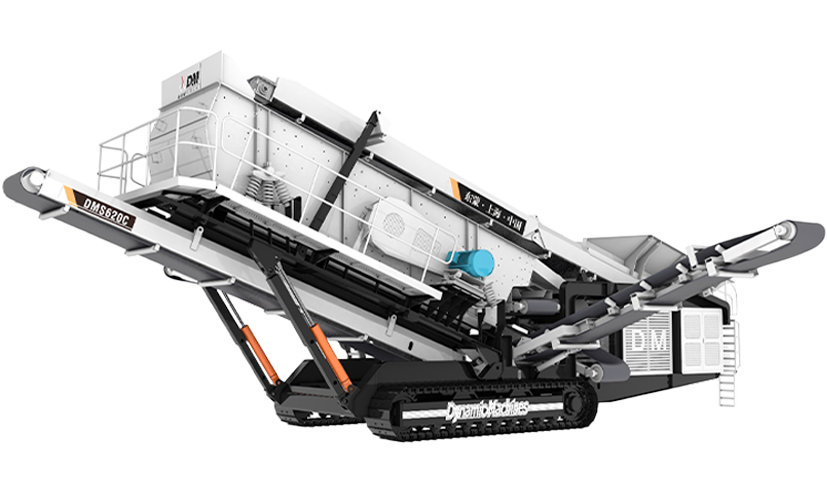Machinery Weight 55-72t
Max Feeding size(mm) ≤700mm
Hopper Volume(m³) /
In modern crushing operations, mobility is a key factor for efficiency, particularly when equipment must operate across varied and uneven sites. Mobile Impact Crusher Factory machines are designed to provide both high performance and flexibility, allowing operators to transport and deploy crushers quickly without the need for extensive site preparation. One critical aspect of this mobility is the design of the chassis, which must support not only the weight and operation of the crusher but also adaptability to complex terrain. Understanding the capabilities and limitations of the mobile chassis is essential for optimizing operational efficiency and safety.

The chassis of a mobile impact crusher serves as the foundation for stability and mobility. To navigate uneven or challenging surfaces, manufacturers often equip the chassis with heavy-duty tracks or wheels, robust suspension systems, and reinforced structural frames. Tracks are particularly effective for rough terrain, distributing weight evenly and preventing sinking in soft ground. Wheels may be preferred for smoother sites where speed and maneuverability are prioritized. The design of the chassis directly impacts the crusher’s ability to maintain stability, prevent tipping, and ensure consistent performance in challenging environments.
Complex terrain can include slopes, rocky surfaces, loose soil, or debris-laden areas. The mobile chassis is engineered to absorb shocks and maintain balance while the crusher is in operation or during transit. Suspension systems, articulated frames, and adjustable track tension are often integrated to allow the machine to conform to irregular surfaces. These features reduce the risk of operational interruptions, component damage, or unsafe working conditions. A well-designed chassis ensures that the crushing process can continue efficiently even when the site conditions are less than ideal.
The mobile chassis also enhances operational flexibility by allowing the crusher to move between multiple work zones without the need for additional lifting equipment. In large-scale projects, this capability significantly reduces setup time and increases production efficiency. Additionally, many mobile impact crushers are designed to fold or adjust their chassis dimensions for transport, enabling safe and legal movement on public roads. This combination of adaptability to rough terrain and transport efficiency makes the mobile chassis a key feature for projects with multiple and dispersed crushing sites.
Operating on uneven or challenging terrain introduces inherent safety risks. A stable chassis reduces the likelihood of tipping, sliding, or sudden shifts during operation. Features such as hydraulic stabilizers, track locks, and slope sensors can further enhance safety. Mobile Impact Crusher Factory designs prioritize these safety measures to protect both the equipment and personnel. By incorporating real-time monitoring and automated adjustments, the chassis can adapt dynamically to changes in terrain and load distribution, reducing accidents and maintaining operational continuity.
The demands of complex terrain place additional stress on the chassis components. Tracks, suspension elements, and hydraulic systems require regular inspection and maintenance to ensure reliability. Mobile Impact Crusher Factory emphasizes durable materials and reinforced construction to withstand harsh conditions, but preventive maintenance remains critical. Ensuring proper lubrication, checking for wear, and monitoring alignment are essential to preserving the chassis’s adaptability and overall machine performance.
The mobile chassis of modern impact crushers plays a crucial role in enabling machines to operate efficiently across complex and uneven terrain. Through robust design, advanced suspension, and adaptive features, Mobile Impact Crusher Factory equipment can navigate challenging sites while maintaining stability, safety, and production efficiency. Proper maintenance and adherence to operational guidelines further ensure that the chassis performs reliably under diverse conditions. By combining engineering innovation with practical design, manufacturers provide crushers capable of meeting the mobility demands of today’s dynamic construction and mining environments.
Machinery Weight 53-62t
Max Feeding size(mm) ≤600mm
Hopper Volume(m³) 80-360t/h
Machinery Weight 55-57t
Max Feeding size(mm) ≤215mm
Hopper Volume(m³) /
Machinery Weight 33-35t
Max Feeding size(mm) 150-400t/h
Hopper Volume(m³) 2.5
Machinery Weight 33t
Max Feeding size(mm) 150-400t/h
Hopper Volume(m³) 7m³
Machinery Weight 54-63t
Max Feeding size(mm) ≤600mm
Hopper Volume(m³) /
Machinery Weight 9.5-75t
Max Feeding size(mm) ≤1000mm
Hopper Volume(m³) 61-1204t/h
Just let we know what you want, and we will get in touch with you as soon as possible!